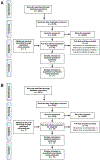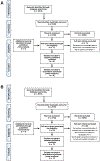AGA Technical Review on the Role of Probiotics in the Management of Gastrointestinal Disorders
- PMID: 32531292
- PMCID: PMC8018518
- DOI: 10.1053/j.gastro.2020.05.060
AGA Technical Review on the Role of Probiotics in the Management of Gastrointestinal Disorders
Conflict of interest statement
Conflicts of interest
These authors disclose the following: Adam V. Weizman has served on an advisory board for Abbvie and Ferring Pharmaceuticals and as a speaker for Janssen, Abbvie and Ferring. Purna C. Kashyap serves on the advisory board of Novome Biotechnologies and is an ad hoc consultant for Otsuka Pharmaceuticals and Pendulum Therapeutics. The remaining authors disclose no conflicts. All members were required to complete disclosure statement. These statements are maintained at the American Gastroenterological Association Institute (AGA) headquarters in Bethesda, Maryland. Panel members disclosed all potential conflicts of interest according to the AGA Institute policy. No Guideline Panel member was excused from participation in the process owing to disqualifying conflict.
Figures







References
-
- Food and Agricultural Organization of the United Nations (FAO)/World Health Organization (WHO). Health and Nutritional Properties of Probiotics in Food including Powder Milk with Live Lactic Acid Bacteria. Report of a Joint FAO/WHO Expert Consultation on Evaluation of Health and Nutritional Properties of Probiotics in Food Including Powder Milk with Live Lactic Acid Bacteria Cordoba, Argentina; October 1–5 2001.
-
- Probiotics Market Size, Share & Trends Analysis Report By Product (Food & Beverages, Dietary Supplements), By Ingredient (Bacteria, Yeast), By End Use, By Distribution Channel, and Segment Forecasts, 2019–2025. Available at: https://www.grandviewresearch.com/industry-analysis/probiotics-market. Accessed October 5, 2019.
-
- Guyatt GH, Oxman AD, Kunz R, et al. GRADE guidelines: 2. Framing the question and deciding on important outcomes. J Clin Epidemiol 2011;64:395–400. - PubMed
-
- Higgins JPT, Green S, eds. Cochrane Handbook for Systematic Reviews of Interventions Version 5.1.0. The Cochrane Collaboration, 2011. Available at: www.handbook.cochrane.org. Updated March 2011. Accessed June 21, 2020.
Publication types
MeSH terms
Grants and funding
LinkOut - more resources
Full Text Sources
Miscellaneous

